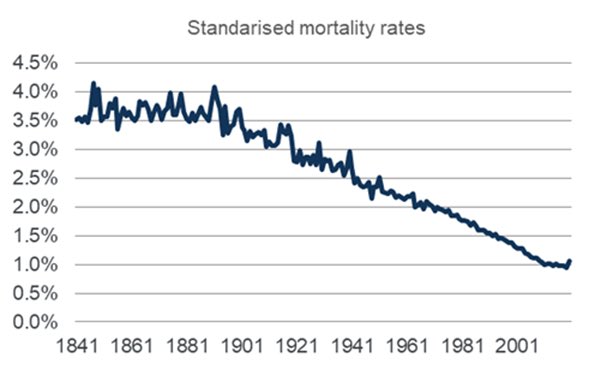
Thread: Since the UK has just released its latest data on greenhouse gas emissions, this feels like as good a time as any to look at the numbers and ask: what’s really going on? The broad picture is v promising (see these headlines from earlier): emissions falling fast.
https://twitter.com/edconwaysky/status/1375028221662654464
Before we go any further, this is not a thread about “the science”. It’s not a debate abt climate change. Feel free to debate that elsewhere. This is abt the DATA. And while there are some interesting question marks over the data, the overarching aim of govt right now is v simple
The UK has committed, in law, to get greenhouse gas emissions down to zero in net terms by 2050. If you consider the starting point for that effort to be 1990, it’s now nearly (but not quite) halfway there. This is quite something… 

You might be wondering: in that case why did a lot of newspapers report last week that we were ALREADY halfway there? They were basing that on an estimate by the brilliant @DrSimEvans. But since then BEIS have revised a lot of their data. So actually we’re not quite there yet.
https://twitter.com/drsimevans/status/1375093206061301767
414 million tonnes of emissions in 2020. Where did they come from?
Intuitive answer is: power stations. But these days they are only 19% of UK GHG emissions (vs 33% a decade ago; more & more power coming from renewables vs fossil fuels).
More emissions come from TRANSPORT. 🚙🚌⛴
Intuitive answer is: power stations. But these days they are only 19% of UK GHG emissions (vs 33% a decade ago; more & more power coming from renewables vs fossil fuels).
More emissions come from TRANSPORT. 🚙🚌⛴

Within a few years domestic greenhouse gas emissions (mainly our boilers) will prob be higher than those from power stations.
Note which lines are going down and which ones aren’t. This is why getting to net zero will be tricky. Power generation, it turns out, was the easy bit.
Note which lines are going down and which ones aren’t. This is why getting to net zero will be tricky. Power generation, it turns out, was the easy bit.

Actually domestic UK emissions have been falling for a long time. They peaked in the early 1970s and have been falling ever since. Partly this is because we’re genuinely getting cleaner: cars more efficient, more renewable energy, better boilers, less coal being burned etc 

But partly it reflects something else
Our manufacturing sector shrank
Our mining sector pretty much ended
We went from making our own goods in our own factories to shipping them in from overseas.
Some would argue, with reason, that we shouldn’t just look at DOMESTIC emissions…
Our manufacturing sector shrank
Our mining sector pretty much ended
We went from making our own goods in our own factories to shipping them in from overseas.
Some would argue, with reason, that we shouldn’t just look at DOMESTIC emissions…
This chart tells the story. The red bit is domestic emissions, broadly the numbers govt was announcing today. Those other segments show you emissions used to produce goods that we then IMPORT. A more comprehensive picture of UK emissions shd prob consider them too 

Consider all GHG emissions inc those embedded in what we import and the net zero outlook is less promising. Far from reducing emissions by a third we’ve reducing them by barely more than half that (NB different dataset & time period, hence the % fall is different to the BEIS one) 

You see the situation: Britain is doing brilliantly at reducing its emissions. That partly reflects genuine reform and “greening” but it partly reflects deindustrialisation. The more factories we shut, the closer we get to zero. Which is an odd incentive to bake into the economy.
But as I say, the UK is doing v well. Reducing emissions by more than Germany, France, Italy. Some will argue this is as much because we’ve shut down manufacturing faster than them. Even so: the picture across much of Europe is of emissions falling & falling. Hurrah, right? 

Zoom out and it’s a v different picture. Emissions in Western Europe might well be falling but they represent a teeny tiny sliver of global emissions, which are climbing higher and higher, with China now making up by far the biggest slice. UK et al are statistically irrelevant 

With the UK set to host COP26 this year, we’ll soon be hearing a lot more big promises and big claims, all founded in data. So let’s not forget that actually a simple number often isn’t quite as simple as it seems. Especially when it comes to climate/energy.
• • •
Missing some Tweet in this thread? You can try to
force a refresh












